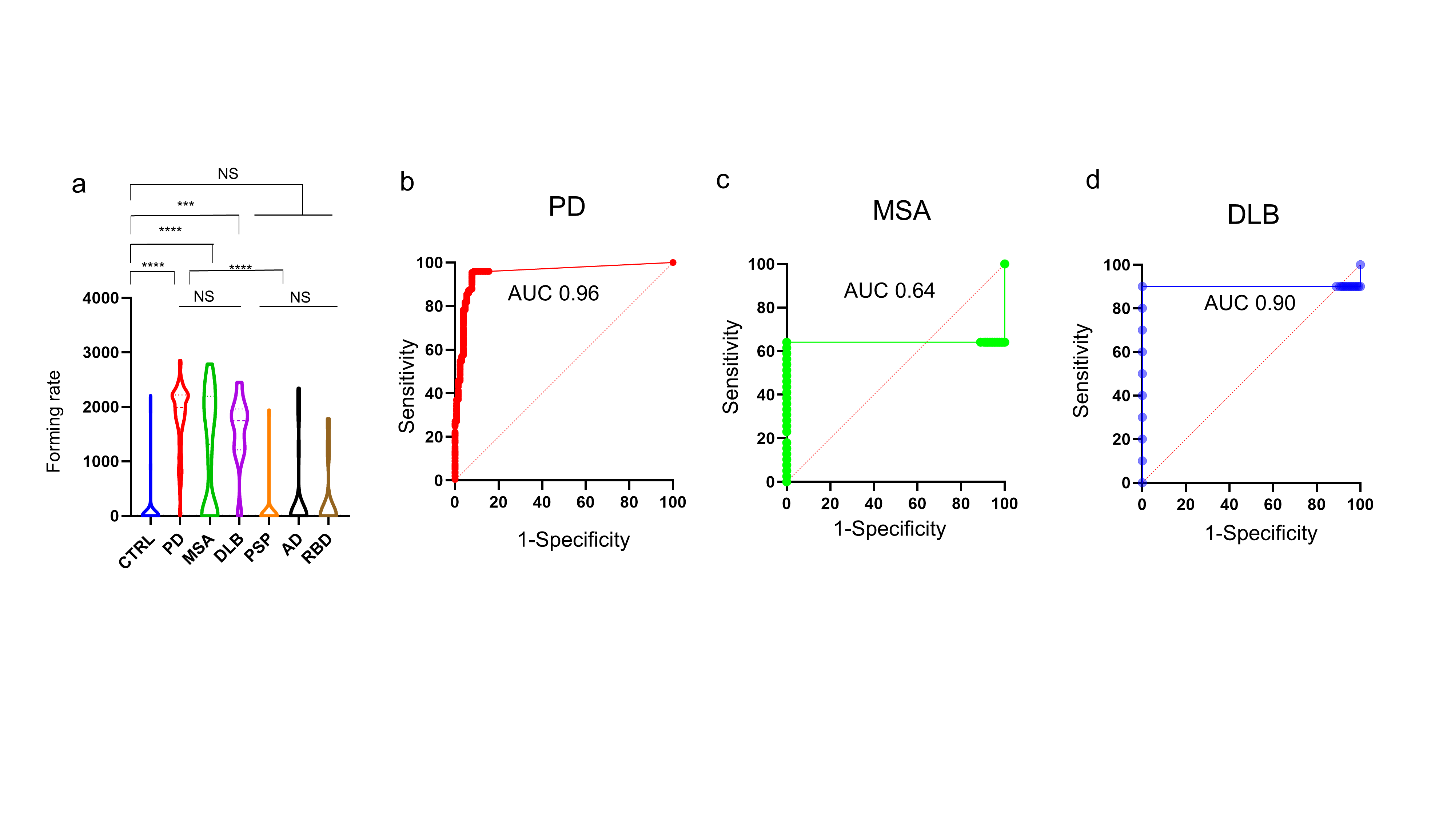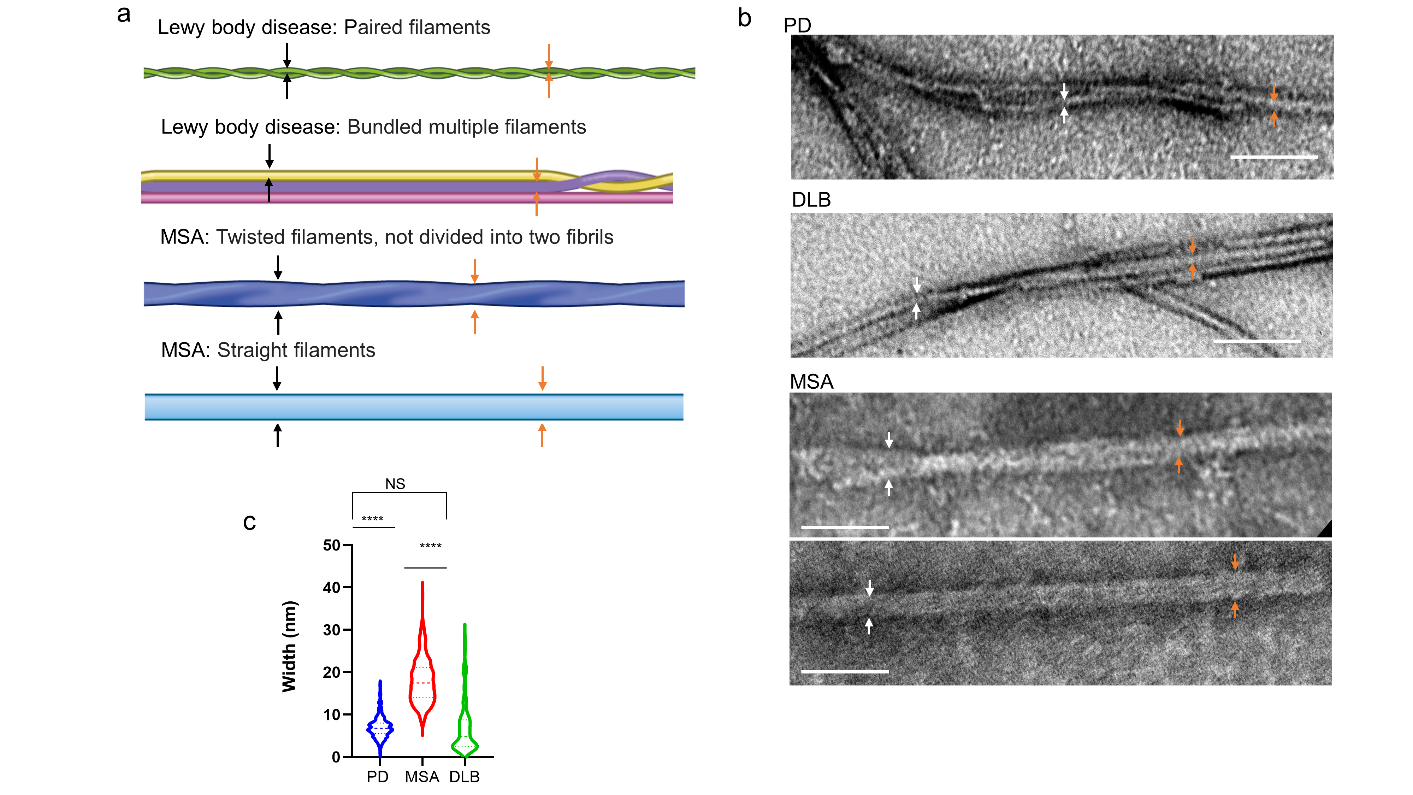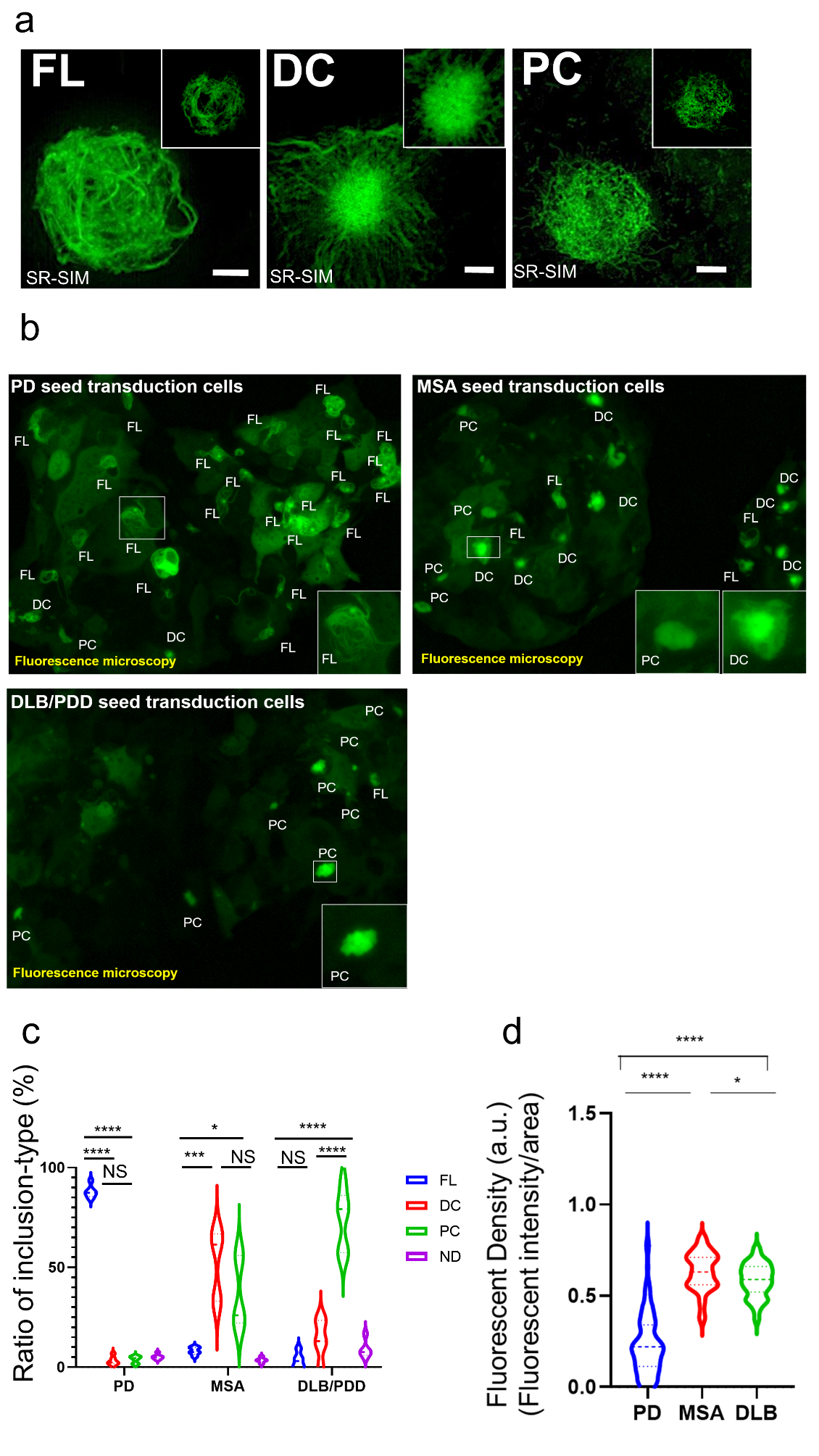Category: Parkinson's Disease: Pathophysiology
Objective: To examine whether alpha-synuclein (aSyn) seed exists in the serum and its potential as a serum biomarker.
Background: Parkinson’s disease (PD) and Multiple system atrophy (MSA) are defined as synucleinopathies, comprising pathomechanisms that involve aSyn seeds converting a native form to an aberrant conformational structure and attaining propagative characteristics. Although aSyn seeds are detected in various tissues, it remains unclear whether these seeds might exist in the serum.
Method: We developed a novel assay system, immunoprecipitation-based real-time quaking-induced conversion (IP/RT-QuIC), to detect aSyn seeds in serum of patients with synucleinopathies. Diagnostic performance was assessed with receiver operating characteristic curve analyses. The morphological characteristics of the IP/RT-QuIC products were evaluated using transmission electron microscopy (TEM), and the seeding properties in cell and mouse models were evaluated. Also, we analyzed the reproducibility of IP/RT-QuIC.
Results: We collected sera from 260 participants with synucleinopthies (221 with PD and 39 with MSA), 72 with non-synucleinopathies, and 128 control. IP/RT-QuIC displayed high diagnostic performance for the differentiation of the PD versus controls (area under the curve [AUC] 0.95 [95% CI 0.92–0.98]) and MSA versus controls ([AUC] 0.64 [95% CI 0.49–0.79]) (Fig.1). In pathologically confirmed cases, sera were collected from 6 patients with synucleinopathies (3 PD and 3 MSA), 3 controls as an internal cohort, and one PD patient and two non-synucleinopathies as an external cohort. The intra-batch and inter-batch kappa coefficients of variation were 0.61-1.00. Positivity rates of IP/RT-QuIC for the cases with the pathologically confirmed diagnosis of the external cohort, non-synucleinopathy patients had 0% positivity rates, while PD patients had 100% positivity rates. The TEM analysis revealed that the IP/RT-QuIC-derived aSyn fibrils exhibit a distinct fibular structure (Fig.2). The propagative potential of the amplified aSyn fibrils was confirmed both in cells (Fig.3) and in vivo.
Conclusion: We demonstrated that IP/RT-QuIC enabled the detection seeds in the serum of patients with synucleopathies. Furthermore, the amplified aSyn seeds maintain their disease-specific morphological and propagative properties. Finally, this novel approach also allows the distinction between PD and MSA.
To cite this abstract in AMA style:
A. Okuzumi, T. Hatano, G. Matsumoto, N. Hattori. IP-RT-QuIC Identify Disease-Specific Alpha-Synuclein Seeds in serum from patients with syncleinopathy [abstract]. Mov Disord. 2023; 38 (suppl 1). https://www.mdsabstracts.org/abstract/ip-rt-quic-identify-disease-specific-alpha-synuclein-seeds-in-serum-from-patients-with-syncleinopathy/. Accessed December 28, 2025.« Back to 2023 International Congress
MDS Abstracts - https://www.mdsabstracts.org/abstract/ip-rt-quic-identify-disease-specific-alpha-synuclein-seeds-in-serum-from-patients-with-syncleinopathy/



